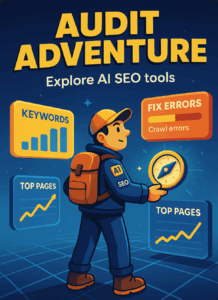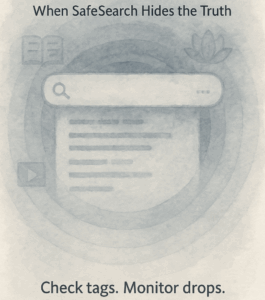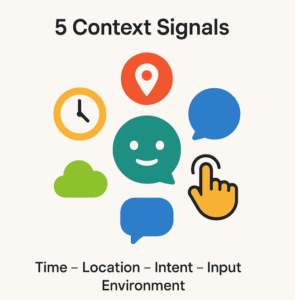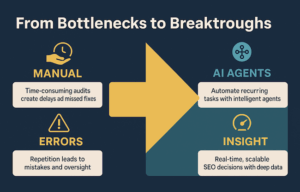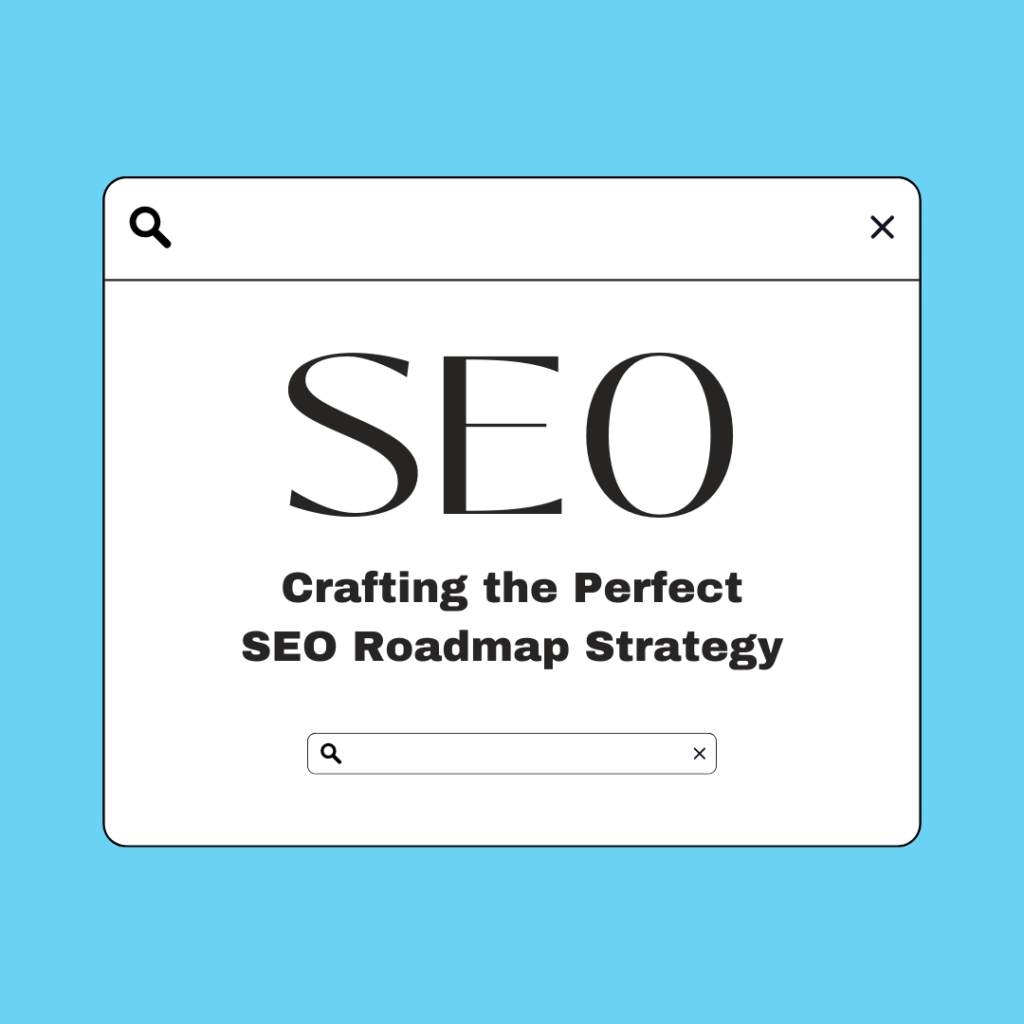
Table of Contents
ToggleMastering SEO Roadmap Strategy for 2025: A Comprehensive Guide
In the dynamic world of digital marketing, the race to the top of search engine results is relentless. As we gear up for 2025, the importance of a structured and strategic approach to SEO becomes paramount. Enter the SEO roadmap a strategic blueprint that ensures your online efforts are not just effective, but also systematic and future-proof.
An SEO roadmap isn’t merely a plan; it’s a comprehensive strategy that aligns your online visibility efforts, ensuring they’re scalable and successful. This guide will delve deep into crafting an impeccable SEO roadmap strategy for 2025, enriched with tutorials, examples, and actionable insights.
Understanding the Basics of SEO Roadmap Strategy
What is an SEO Roadmap?
An SEO roadmap strategy is a detailed plan that outlines your search engine optimisation strategy over a specific timeframe. It serves as a navigational tool for your SEO journey, detailing where you currently stand, where you aim to go, and the best route to get there. This roadmap encompasses everything from technical adjustments and content strategies to off-page endeavors and continuous monitoring.
Why is it Essential?
In the vast realm of online content, making a mark is no small feat. An SEO roadmap strategy ensures you’re not wandering aimlessly but moving with a clear direction. It aligns your SEO strategies initiatives with business objectives, ensuring maximum ROI. Furthermore, it offers clarity, ensuring every stakeholder, from content creators to developers, understands and follows the strategy.
The Preliminary Steps: Setting the Foundation
Before diving deep into the roadmap’s intricacies, it’s vital to establish a robust foundation. This groundwork ensures that your roadmap is not only effective but also adaptable to the ever-evolving SEO landscape.
1. Initial Audits
Kickstart with a thorough audit of your current SEO status. Tools like SEMrush or Ahrefs can offer insights into your site’s health, backlink profile, and keyword rankings. For instance, if you discover that your site’s loading speed is below average, it’s an area that demands immediate attention due to its significant impact on user experience and SEO.
Tutorial: Using SEMrush for SEO Audit
- Step 1: Log in to SEMrush and input your domain in the search bar.
- Step 2: Navigate to the ‘Site Audit’ section.
- Step 3: SEMrush will present a site health score and pinpoint issues based on priority.
- Step 4: Delve into each issue, comprehend its implications, and initiate corrective measures.
https://youtube.com/watch?v=AgznORjWPRU%3Fsi%3DgbigNnQhBlpa3Qbn
2. Identifying Target Audience and Search Behavior:
The essence of any successful SEO strategy lies in understanding your audience. Delve into analytics to grasp who your audience is, their search patterns, and how they interact with your content.
Example: If you’re an eco-friendly travel agency, your target audience might be individuals passionate about sustainable travel, eco-tourism, and green vacations. By understanding this, you can craft content that addresses their specific interests and queries.
3. Comprehensive Keyword Research:
Keywords are the pillars of SEO. They determine how your content is indexed and how users discover you. Begin with your primary keyword and expand to secondary or long-tail keywords.
Tutorial: Using Google’s Keyword Planner for Keyword Research
- Step 1: Access Google Ads and navigate to the ‘Keyword Planner.’
- Step 2: Input your primary keyword.
- Step 3: The tool will suggest related keywords, their search volume, and competition.
- Step 4: Select keywords that resonate with your content and strike a balance between search volume and competition.

Crafting the SEO Roadmap: A Step-by-Step Guide
Technical SEO
The foundation of any search engine optimisation strategy is ensuring that your website is technically sound. This involves optimizing site structure, ensuring mobile-friendliness, improving site speed, and more.
Tutorial: Improving Site Speed
- Step 1: Use tools like Google PageSpeed Insights to analyze your site’s speed.
- Step 2: The tool will provide recommendations, such as compressing images or leveraging browser caching.
- Step 3: Implement these suggestions, either manually or using plugins if you’re on platforms like WordPress.
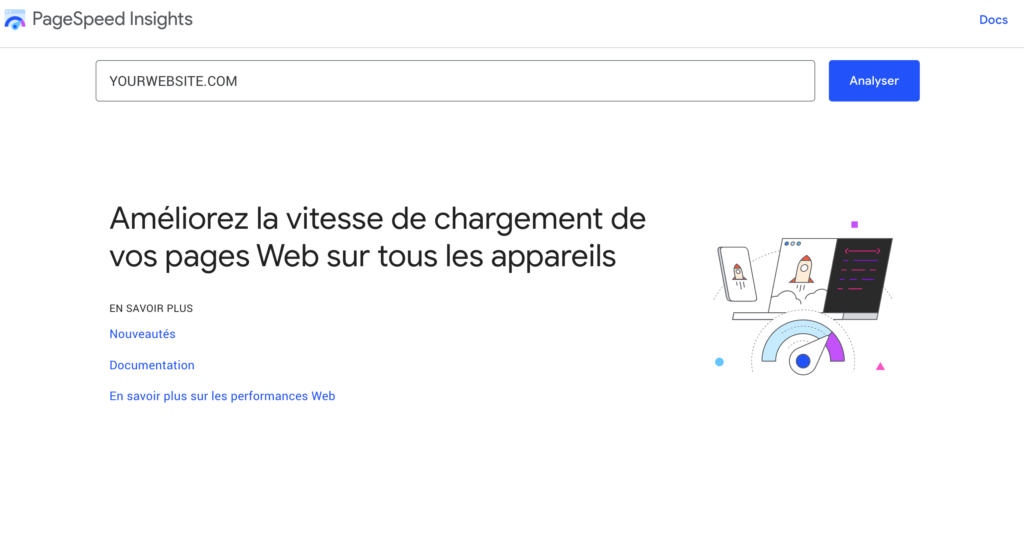
On-Page SEO
This involves optimizing individual pages on your website, ensuring they’re both user and search engine friendly. Key elements include meta tags, header tags, keyword placement, and content quality.
Example: For a blog post about “Eco-friendly travel destinations in 2025,” ensure the title tag contains the primary keyword, the content is rich and informative, and the images are optimized with relevant alt tags.
Off-Page SEO
Off-page SEO revolves around activities that drive traffic and authority to your website from external sources. This primarily involves building high-quality backlinks.
Tutorial: Building Backlinks
- Step 1: Identify authoritative websites in your niche.
- Step 2: Reach out to them with a well-crafted pitch, offering valuable content or insights.
- Step 3: Ensure the backlinks you gain are “dofollow” to pass on the SEO benefits.
https://youtube.com/watch?v=yUvEB7yiBFk%3Fsi%3D2TNVh8o1naxzYDQC
Content Strategy
Content remains king in the realm of SEO. A well-thought-out content strategy ensures that you’re not only attracting visitors but also engaging them and encouraging repeat visits.
1. Importance of Quality Content
Quality trumps quantity any day. It’s essential to produce content that offers value, addresses user queries, and establishes you as an authority in your niche.
Example: If you’re a fitness brand, instead of merely listing exercises, delve deep into the science behind them, offer variations for different fitness levels, and provide insights into nutrition and recovery.
2. Crafting a Content Calendar
A content calendar helps streamline your content production, ensuring regular updates and consistency in quality.
Tutorial: Creating a Content Calendar
- Step 1: Identify key topics and themes relevant to your audience.
- Step 2: Allocate specific dates for each topic, ensuring a mix of content types—blogs, videos, infographics.
- Step 3: Stick to the calendar but remain flexible to accommodate trending topics or updates.
See more of how to do a content calendar
3. Optimizing Content for SEO
Every piece of content should be optimized for search engines without compromising user experience.
Tutorial: Content Optimization
- Step 1: Identify the primary and secondary keywords for your content.
- Step 2: Ensure natural integration of these keywords in the title, headers, and body.
- Step 3: Use multimedia elements like images and videos, ensuring they’re optimized with alt tags and relevant descriptions.
Monitoring and Adjustments
No SEO strategy is set in stone. The digital landscape is ever-evolving, and it’s crucial to monitor your efforts and make necessary adjustments.
1. Using Analytics
Tools like Google Analytics offer insights into user behavior, traffic sources, and more. Regularly reviewing these metrics helps identify what’s working and what’s not.
Tutorial: Setting Up Google Analytics
- Step 1: Sign up for Google Analytics and add your website.
- Step 2: Integrate the provided tracking code into your website.
- Step 3: Monitor metrics like user behavior, bounce rate, and traffic sources to gain insights.
https://youtube.com/watch?v=oJx9DpXtmAE%3Fsi%3DQSWie-978LXJdfLM
2. Understanding KPIs
Key Performance Indicators (KPIs) help measure the success of your SEO efforts. Common KPIs include organic traffic, bounce rate, average session duration, and conversion rate.
Example: If your goal is to increase sales through organic traffic, monitor metrics like organic traffic growth, conversion rate from organic visitors, and average order value.
3. Making Necessary Changes
Based on the insights from analytics and KPIs, make adjustments to your strategy. This could involve tweaking content, optimizing for new keywords, or enhancing the user experience.
Common Mistakes to Avoid in SEO Roadmap Strategy
1. Over-Optimization
While it’s essential to optimize content, overdoing it can lead to penalties. Ensure keyword usage is natural and avoid stuffing.
Example: Instead of repeatedly using “best digital cameras 2023,” incorporate variations like “top cameras for this year” or “leading digital camera models.”
2. Neglecting Mobile Users
With a significant chunk of users accessing content via mobile, ensuring mobile-friendliness is non-negotiable.
Tutorial: Testing Mobile-Friendliness
- Step 1: Use Google’s Mobile-Friendly Test tool (It’s free)
- Step 2: Enter your website URL.
- Step 3: The tool will provide insights and recommendations for improvement.
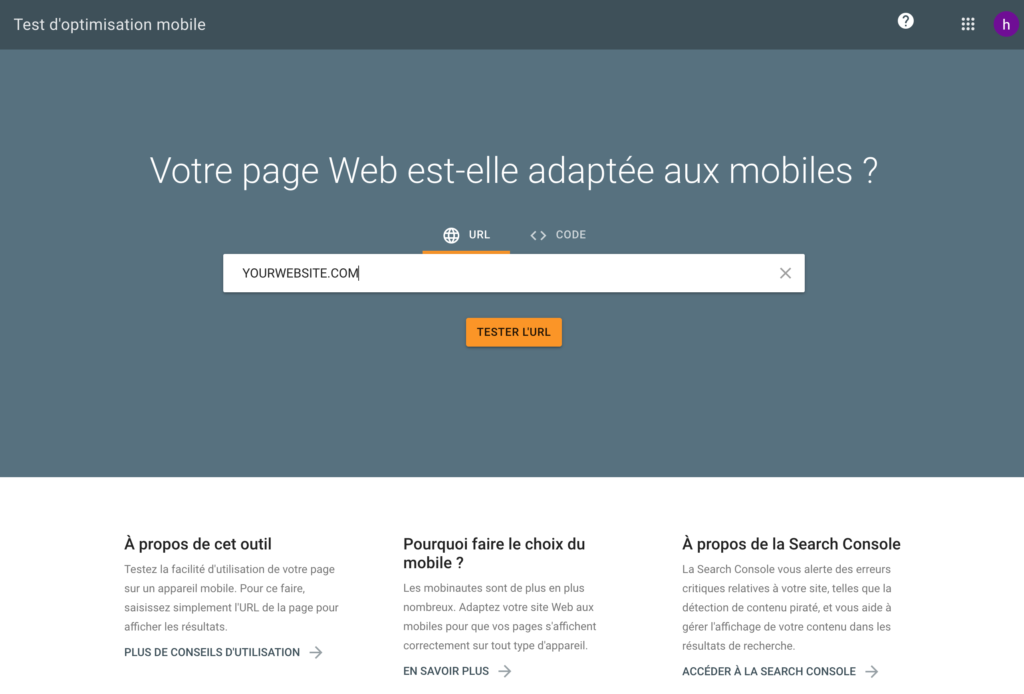
Result for my website :
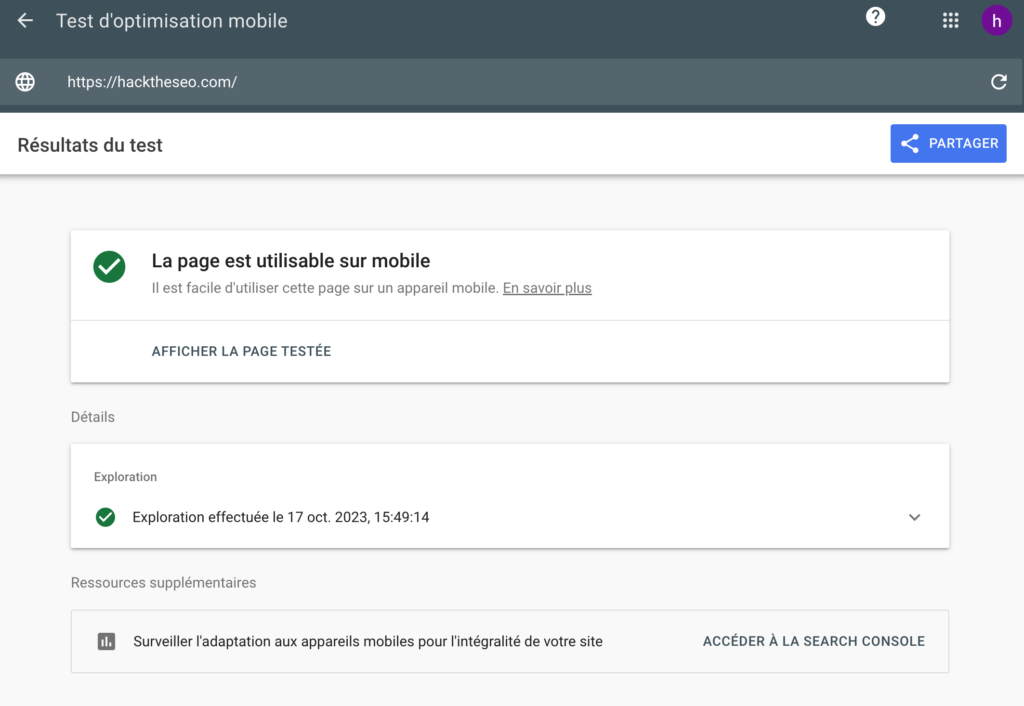
3. Not Updating Content
SEO isn’t a one-time effort. Regularly update content to keep it relevant and in line with the latest information.
Tips and Tricks for a Successful SEO Roadmap Strategy in 2023
1. Stay Updated with Algorithm Changes
Search engine algorithms are continually evolving. Subscribing to SEO news sources like Search Engine Journal or Moz can keep you informed.
2. Prioritize User Experience
Google’s Core Web Vitals emphasize the importance of user experience. Ensure your site loads quickly, is interactive, and offers a stable layout.
3. Leverage AI and Emerging Technologies
Artificial Intelligence is revolutionizing SEO. Tools like Clearscope or Frase.io use AI to optimize content, suggesting improvements and keyword integrations.
4. Voice Search Optimization strategy
With the rise of smart speakers and voice assistants, optimizing for voice search is crucial. This often means targeting more conversational, long-tail keywords.
Example: Instead of “best coffee shops Paris,” consider “Where can I find the best coffee shops in Paris?”
5. Video Content is King
Video content is gaining traction. Consider integrating video content into your strategy, ensuring it’s optimized with relevant titles, descriptions, and transcriptions.
The Ever-Evolving Nature of SEO
The only constant in the world of SEO is change. Search engines continually refine their algorithms to offer better results to users. What this means for businesses and marketers is that adaptation isn’t just recommended; it’s mandatory.
1. Continuous Learning
Staying updated with the latest trends, algorithm changes, and best practices is crucial. Consider enrolling in online courses, attending webinars, or joining SEO communities.
Tutorial: Joining an SEO Community
- Step 1: Platforms like Reddit have active SEO communities (e.g., r/SEO).
- Step 2: Join the community, participate in discussions, ask questions, and share insights.
- Step 3: Regularly check for updates, as members often share the latest news and trends.
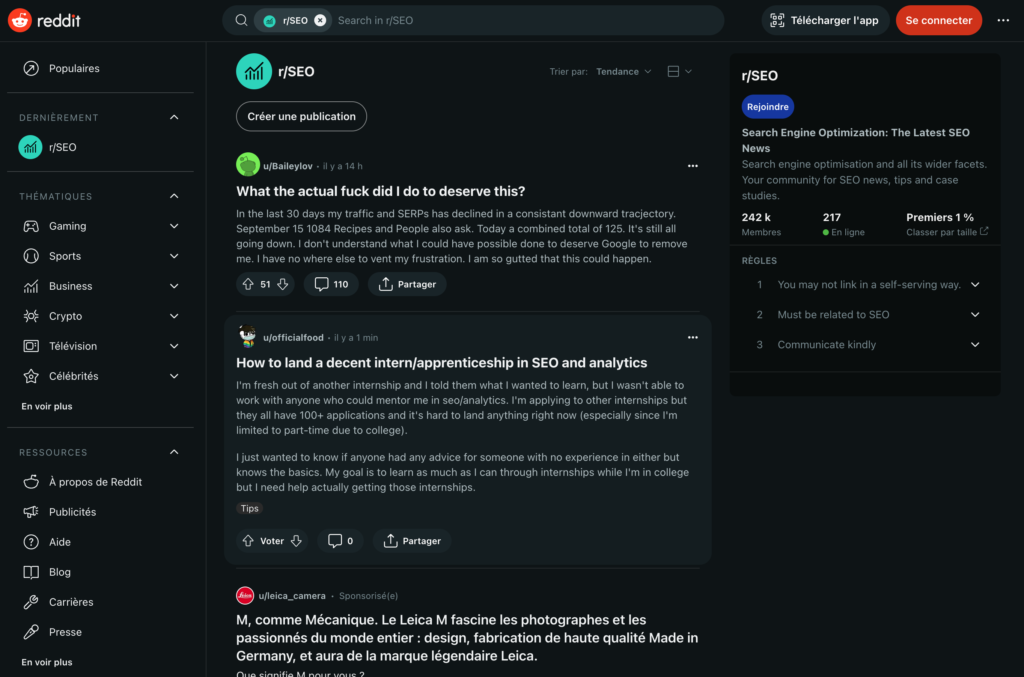
2. Experimentation is Key
While it’s essential to follow best practices, sometimes stepping off the beaten path can yield results. Don’t hesitate to experiment with new content formats, strategies, or tools. Monitor the results and refine your approach accordingly.
3. Feedback Loop
Encourage feedback from your users. Tools like Hotjar can provide heatmaps, showing you how users interact with your content. Such insights can be invaluable in refining your strategy.
4. Collaborate and Grow
SEO isn’t a solitary endeavor. Collaborate with content creators, developers, and other stakeholders. A cohesive team, where everyone is aligned with the SEO goals, can significantly amplify the results.
5. Tools and Technology
Invest in the right tools. While manual efforts are crucial, tools like Ahrefs, SEMrush, or Screaming Frog can automate tasks, provide deeper insights, and significantly enhance your SEO sgtratégies efforts.
Conclusion
The realm of SEO is dynamic, with strategies that worked yesterday becoming obsolete today. As we gear up for 2023, the importance of a well-structured and informed approach cannot be overstated. An SEO roadmap strategy, when crafted with care and insight, can be the guiding star, ensuring that businesses not only navigate the complex waters of digital marketing but also thrive.
In the vast digital expanse, where countless websites vie for a user’s attention, a strategic edge is indispensable. An SEO roadmap strategy provides this edge, ensuring a systematic approach to search engine optimization. But beyond the strategy, it’s the execution that counts. Regular audits, timely updates, and a keen eye on analytics can make the difference between an average online presence and a dominant one.
However, it’s essential to remember that SEO isn’t just about search engines. At its heart, it’s about users. It’s about delivering valuable content, ensuring a seamless user experience, and building trust. As algorithms evolve, they aim to mimic human behavior more closely, prioritizing content that offers genuine value.

Eric Ibanez
News Writer & Founder Hack The SEO
An expert in SEO since the launch of his e-commerce dedicated SaaS in 2016, Eric quickly grasped the significance of optimization for search...
Suggested Articles

